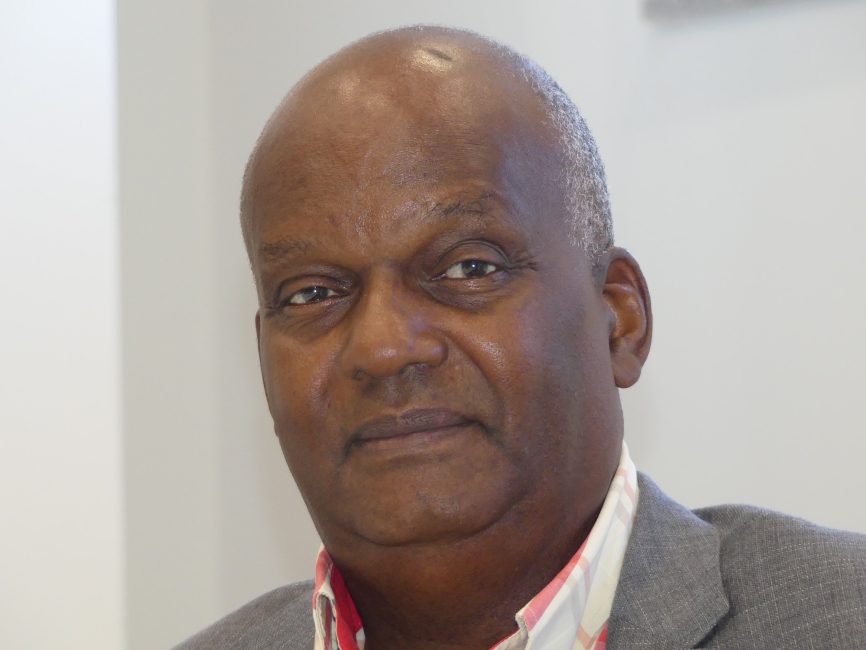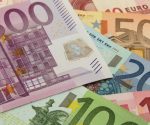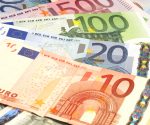Interview with Mr. Hurricane, Dennis Richardson
 ~ “Return of cruise ships crucial for economic recovery” ~
~ “Return of cruise ships crucial for economic recovery” ~
PHILIPSBURG – Helping people in need and kick-starting the economy: those two issues have to be tackled simultaneously, says Dennis Richardson, the chairman of the workgroup National Recovery Plan.
“The Ministry of Public Health, Social Development and Labor expects 6,000 unemployed,” Richardson says in a conference room of the Central Bank on the Pondfill. “Multiply that by the minimum wage and you need 80 million guilders a year to help these people alone.”
The state of emergency is over, Richardson says. “But there are still people in need. They have no roof or no income and if they were working little jobs black, like cleaning houses, those jobs have disappeared. These people need help.”
The Dutch recovery fund of €550 million will have to finance these needs. Of this amount, €40 million goes to budget support for the year 2017.
“Part of the remaining money must be used to help people who are in serious need,” Richardson says. These are people who have no income and who are unable to pay their rent or their mortgages. We have to tackle those situations and we have ideas about how to do this. But it will all be for naught if we do not make sure that the economy gets going again. We cannot continue endlessly with social support. The resources are limited.”
Supporting 6,000 unemployed citizens for a longer period is a practical impossibility, Richardson says. “we have to do our utmost to bring down unemployment.”
As a good example he mentions the marine industry. “They have said: we don’t need money, but we need permits to lift all those boats out of the water. That could provide employment.”
In the hotel industry, 80 percent of the inventory has been damaged by Hurricane Irma. “You cannot use the remaining 20 percent either,” Richardson observes. “People do not want to stay in a place that is half destroyed. It will cost more time before these accommodations are able to receive guests again.”
The fastest way to get the economy going again is making sure that the cruise ships return, Richardson says. “We have to convince the cruise lines to come back to St. Maarten. to do that, we have to guarantee security, make sure that there is electricity and water, and offer excursions.”
The French side is out of the picture for excursions for the time being, due to the heavy damages Irma cause to Marigot’s waterfront and also to Orient Bay where all beach outlets have been pulverized.
“We have to offer alternative excursions,” Richardson says. “Select four or five beaches on the Dutch side, buy a couple of beautiful tents and equip them all based on a theme. Then offer excursions to those places. This can be done within a reasonable time. We should buy tents that can be easily disassembled; we are working on that. This way employment will get underway again.”
Richardson says that the work force has to reckon with a transition from hospitality to construction jobs. “That requires additional training. Use the time we have now to take the quality of service to a higher level.”
How the government will use the money from the recovery fund is unclear at this moment. The workgroup National Recovery Plan will present its final report before the end of the year. That report will be the guideline for defining projects.
“It seems that a lot of money will have to go towards helping citizens,” Richardson says. “But as I said, it is of great importance to bring down unemployment. Therefore investing in the economy is a priority.”
Soft loans would help companies getting back on their feet again faster. “The life cycle of a tourism product is five to ten years. After that time, you have to refresh and a lot of accommodations have reached that point. If we wait too long with upgrading, St. Maarten will fall out of the itineraries of cruise companies and airlines. Keeping them on board is easier than getting them back.”
Richardson was St. Maarten’s Lt. Governor when Hurricane Luis hit the island hard in 1995. “Mr. Hurricane”, as his nickname became, notes that the damages caused by Irma are far greater than those caused by Luis. “The advantage is that Irma moved fast. Luis hung around for I believe something like 38 hours. If that had happened with Irma there would not have been much left of the island.”
The lessons St. Maarten learned from the experience with Luis bore fruit in the battle with Irma, Richardson says. “After Luis we decided to put cabling for all new projects underground and to replace existing above-ground cabling gradually. That is why we could restore electricity and water supply reasonably fast this time. Look at a neighborhood like Ebenezer; that was severely damaged during Luis but now they have hardly any damages.”
Still, mistakes were also made in the preparation for the arrival of Hurricane Irma – for instance with the protection of the water supply. Water tanks sustained severe damages and that could have been prevented, Richardson thinks.
“People started to amass water before the arrival of the hurricane, so when the storm arrived those tanks were empty. Next time we have to prevent that from happening. We also have to protect water meters and for instance transformer houses better against hurricanes.”
Photo caption: Dennis Richardson, chairman of the workgroup National Recovery Plan. Photo Hilbert Haar.


























